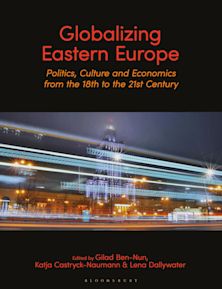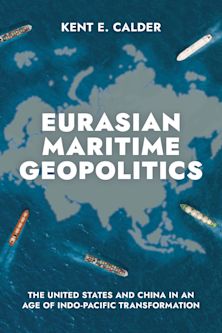- Home
- ACADEMIC
- Politics & International Relations
- Geopolitics
- Mapping Populism
Inspection copy added to basket
This title is available for inspection copy requests.
Please note our inspection copies are only available in ebook format, and are fulfilled by VitalSource™. If an ebook isn’t available, please visit our inspection copy page for more information.
Buy from Bloomsbury eTextBooks
You are now leaving the Bloomsbury Publishing website. Your eBook purchase will be with our partner https://www.vitalsource.com.
Your credit card statement will show this purchase originating from VitalSource Technologies. They will also provide any technical assistance you might require.
You must sign in to add this item to your wishlist. Please sign in or create an account
Description
Brexit. Trump. LePen. The Five Star Movement. The recent success of populist movements and politicians is extraordinary, though the rise of populism is understandable in light of increasing political polarization, disappointing politicians, and exhausting election campaigns. With the future trajectory of democracy uncertain, two important questions remain unanswered. How did we get here? And why did we get here? Exploring how and why populism succeeded, John Agnew and Michael Shin consider the reasons for the Brexit vote, who voted—and who did not vote —for Donald Trump and Marine Le Pen, and the rise of an Italian populist government, Through comparative geographical analyses, the authors literally and figuratively map the rise of populism across the United Kingdom, the United States, France, and Italy. Geography tells us who the people are who have supported populism and the limits and possibilities of its claim to represent all of “the people,” wherever they are. Organized around recurring central themes of turnout, leadership, and media, and using compelling maps, their book encourages thought and discussion on an increasingly important topic—and on the future of democracy itself.
For additional materials and a corrected version of Figure 2.1, visit https://mappingpopulism.com/.
Table of Contents
Preface
1 Introduction: The “Wave” of Populism
2 Mapping Populism
3 Should We Stay or Should We Go? European Immigration, Globalization, and Brexit
4 Reality Bites: The Unexpected Victory of Donald Trump
5 Two Steps Forward, One Step Back? Marine Le Pen and the National Front in France
6 When in Rome . . . Populism and the Five Star Movement in Italy
7 Conclusion
References
Index
Product details
| Published | 24 Jun 2019 |
|---|---|
| Format | Ebook (PDF) |
| Edition | 1st |
| Extent | 182 |
| ISBN | 9798765175354 |
| Imprint | Rowman & Littlefield Publishers |
| Illustrations | 63 b/w illustrations |
| Publisher | Bloomsbury Publishing |
About the contributors
Reviews
-
Agnew and Shin bring a fundamentally geographical perspective to their study of populism—going beyond the usual focus on voting patterns to explore such influences as voter turnout and the changing landscape of political communication. The result is a volume that offers fascinating, original insights into one of the most significant political developments of our time.
Alexander B. Murphy, University of Oregon
-
John Agnew’s and Michael Shin’s Mapping Populism: Taking Politics to the People is a novel and major contribution to an increasingly packed field of populism studies Agnew and Shin take their insights and methods as political geographers to the study of populism and ask how location contributes to political outcomes. Applying a geographical lens to recent elections in the United States, Britain, Italy, and France, Mapping Populism allows readers to see how specific economic and social characteristics of place contribute to political behavior. This book is magisterial in its sweep and lucid in its execution. A must read to understand the populist moment that is sweeping Europe and the United States.
Mabel Berezin, Cornell University
-
With this timely volume, John Agnew and Michael Shin offer a lucid and important diagnosis of the contemporary rise of populism. Challenging facile conceptions of a democratic people, sovereignty, and territory, this book distinguishes itself with its insights into the shifting geographies of electoral participation, leadership, and social media that are shaping European and American politics.
Stephen Sawyer, American University of Paris
-
Agnew and Shin should be congratulated on a timely and groundbreaking scholarly work. They convincingly demonstrate that populism is not "the people" ruling; rather, it is one people's rule over all others. This book is excellent for specialists and scholars who are interested in, knowledgeable of, and conversant with the latest relevant literature.
Historical Geography



































